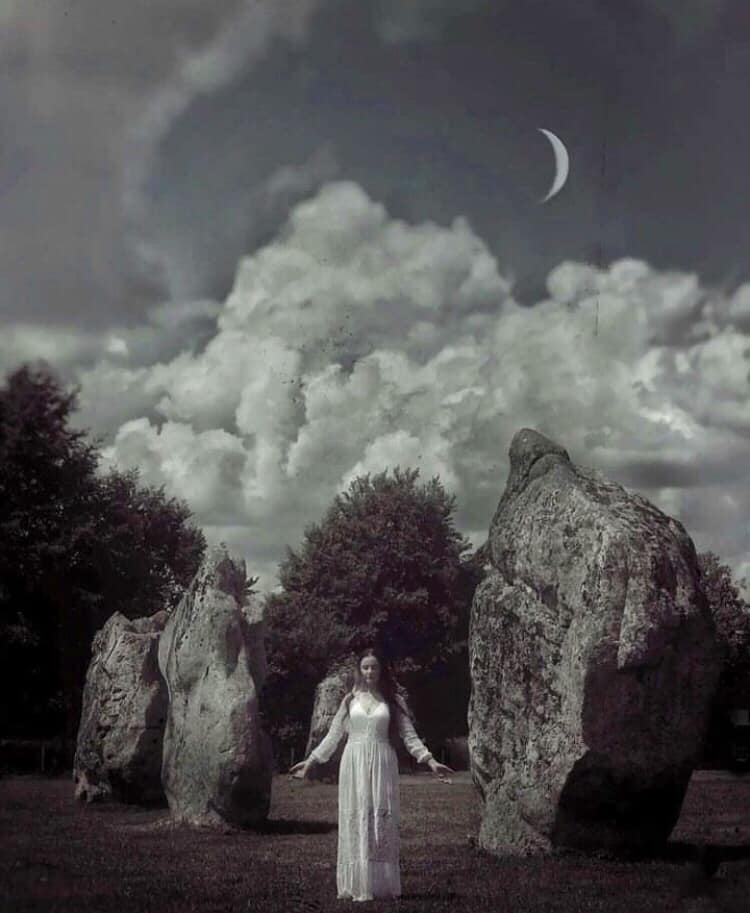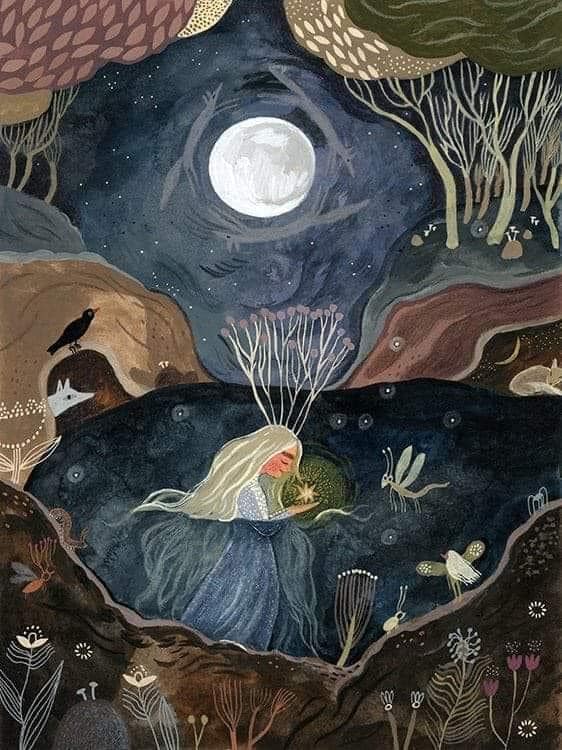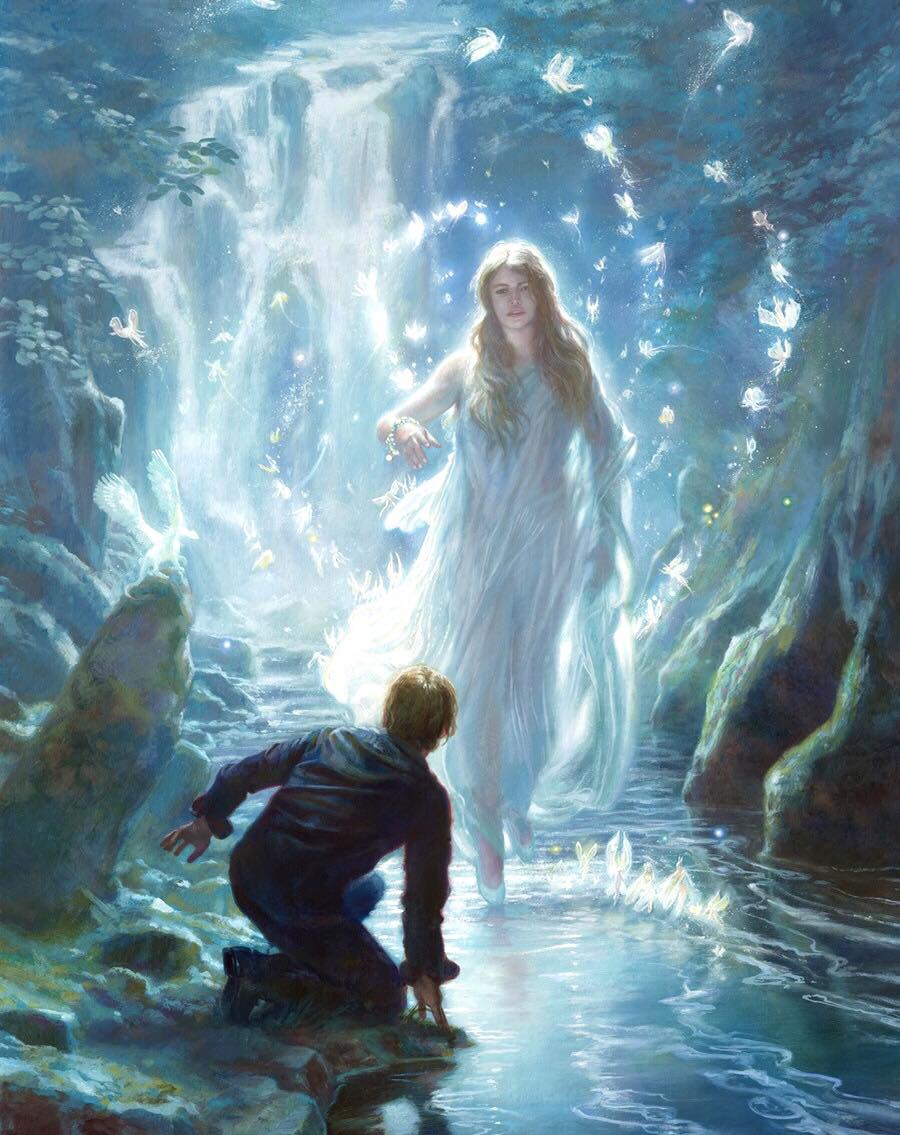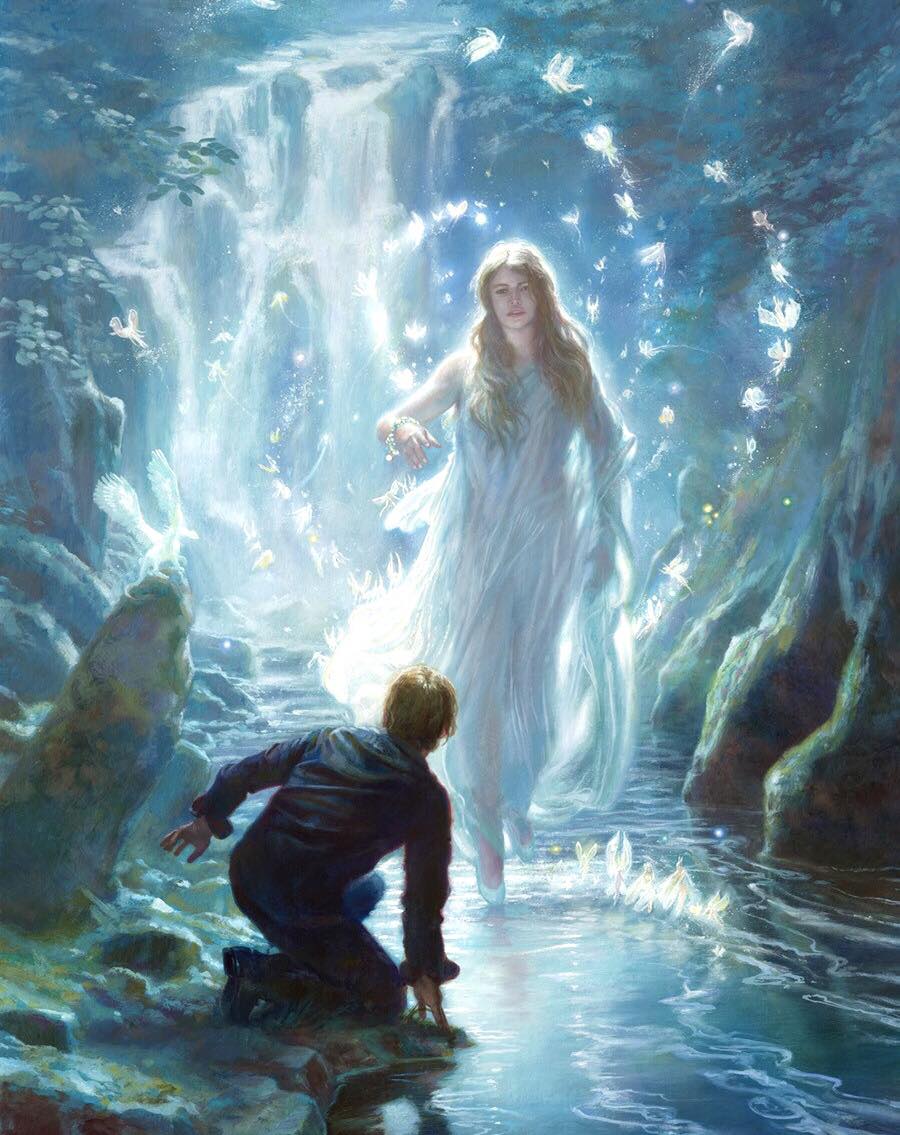
(C.) David Halpin https://www.facebook.com/CircleStoriesDavidHalpin
Recently, there has been an argument put forward that Irish folklore does not record that fairies, the dead, and those taken to the Otherworld can return more easily at Samhain and this point of the yearly cycle.
Some who posit this opinion have said that until the Duchas archives were recorded in the late 1930’s, Irish people did not think of this time as particularly liminal or dangerous in terms of the good folk.
(We know that Irish Medieval writing specifically links this time to fairies and monsters but let’s look at further examples which continue this idea.)
One reason for this, it is argued, is the fact that the phrase ‘thinning of the veil’ is quite recent.
This is actually true, as far as literal wording is concerned. However, Irish folklore does indeed record that the concealing ‘mist’ between the fairy world and the human world is lifted which allows the beings and creatures of the fairy realm to enter our own world.
Considering the fact that the first people living in Ireland neither spoke English or Irish, as we know it today, for me, getting hung up on what seems to be fairly similar descriptions and explanations takes away from the overall point.
To be honest, there really doesn’t even seem to be a consensus as to what this description means in the first place, with some researchers strongly in favour of it being a dividing dimensional marker between worlds, and others advocating for a more psychological or consciousness-based explanation.
There are also those who do not think the terms ‘veil’ or ‘mist’ are helpful, full stop, as there is, in their view, no separation between the fairy realm and that of the human world in the first place.
Looking at the examples of those who have encountered the good people, a person could make a strong argument for any of the above theories.
In this following account from Irish folklore there is a definite physicality to the way the fairies separate those who have trespassed onto their territory.
Not only do they draw down a thick mist to make the humans lose their bearings, but a stone wall appears out of nowhere so there is no way back until the good people have left.
“There is a field in this locality known as Knockparson where the fairies are said to dwell. On several occasions people went there after nightfall to gather mushrooms.
When they entered the field a great thick mist seemed to fall everywhere. When they tried to get out of the field they found it surrounded by a great stone wall. The persons inside in the field had to remain there until morning. As soon as daybreak came the mist suddenly cleared and people could get away.”
https://www.duchas.ie/en/cbes/4428156/4382392/4452321
But what about the point that before people knew about the Duchas archives they wouldn’t have associated Samhain with fairies entering our world and that this is a 20th century add-on?
Well, it doesn’t take much effort to find that this is simply not true.
I would encourage everyone to explore the vast free and public online book collections of Irish folklore, but here is an example from a published work from 1870, roughly 70 years, or a lifetime, before the Duchas collections.
Those persons taken away to the raths are often seen at this time by their living friends, and usually accompanying a fairy cavalcade.
If you meet the fairies, it is said, on All-Hallows Eve and throw the dust taken from under your feet at them, they will be obliged to surrender any captive human being belonging to their company.
Although this evening was kept a merry one in farmsteads, yet those who assembled together wished to go and return in company with others; for in numbers a tolerable guarantee, they thought, was obtained from malign influence and practices of the evil spirits.”
From: Irish Folk Lore: Traditions and Superstitions of the Country, with Humorous Tales. Published 1870 by John O’ Hanlon.
So, considering the fact that this excerpt comes from a book published in 1870 but probably researched and gathered a few years earlier than that we can safely say that there was indeed a belief in the fairies moving from the mounds/ raths at Samhain at this time and before.
It’s also worth remembering that the euphemism of a veil is as much to do with perception as it is to do with boundaries. The concept of a veil hiding something profound is an ancient one. One explanation is that it refers to archaic Goddess mysteries and, indeed, looking at the overlap between fairy-type beings and their queens this makes quite a bit of sense.
In European tradition Diana is a good example of this.
Later 19th century occultists would use the veil as a metaphor in their rites and initiations.
The context was the same: the veil represented the separation between worlds and only when it was lifted could a person realise the full depth and transcendence of the higher consciousness realms.
Another example is A Smaller Social History of Ancient Ireland by P. W. Joyce.
This is a edited compilation of earlier writings from the 1880’s published in 1906.
Again, a lifetime before Duchas.
The section to note begins, “On Samhain Eve, the night before the 1st of November, or, as it is now called, All Hallows Night, or Halloween, all the fairy hills were thrown wide open; for the Fe-fiada (Concealing mist) was taken off.
While they remained open that night, any mortals who were bold enough to venture near might get a peep into them. No sooner was the Fe-fiada lifted off than the inmates issued forth, and roamed where they pleased all over the country; so that people usually kept within doors, naturally enough afraid to go forth.
From the cave of Cruachan or Croghan in Connaught issued probably the most terrific of all those spectre hosts; for immediately that darkness had closed in on Samain Eve, a crowd of horrible goblins rushed out…”
What is really important here is the description confirming that when the concealing fairy mist vanishes, this allows the beings of the Otherworld to enter ours from the mounds and raths. It’s probably a bulls-eye in terms of contradicting the claims that there was no supernatural connotation to the mounds opening at Samhain.
The theory that the veil may occupy the same time and space but remain unseen is also something which Irish folklore tells us in its own way.
We are warned that the good people may be standing next to us or passing by and we will not know it. This may refer to their human-like characteristics making them indistinguishable from us as well as potentially hinting at some dimensional blind-spot existing parallel to our own world.
Sometimes the veil seems strangely specific in terms of location, seeming to open and close like invisible windows to another dimension.
Andrew Lang, in his introduction to The Secret Commonwealth of Elves, Fauns and Fairies by Robert Kirk (1691) recounts an anecdote about a woman who declared that a number of the gentle people (Sleagh Maith) “occasionally frequented her house; that they often conversed with her, one of them putting its hands on her eyes during the time, which hands she had, to be about the size of those of a child of four or five years of age.” The family were “worn down” with these visits, and from the mention of touches of hands.
Even the most ardent argument for fairy encounters being insubstantial and merely altered psychological states becomes difficult to sustain when there are multiple witnesses.
The fairy mist, then, takes on properties which allow it, and those who dwell within and as a part of it, to live outside of time as human beings currently understand it.
In fact, this has always been a gift of fairies in the first place.
Although altered states, or the ‘veil’, may well act as a gateway for these encounters, the overwhelming folkloric record of every culture describes something affecting and physical emanating from beyond it.
Ultimately, the description of a veil may continue to have many meanings for those invested in deep fairy exploration but as a phenomenon it is much more interesting than its current controversy and will also continue to beg even more questions.
(C.) David Halpin.



